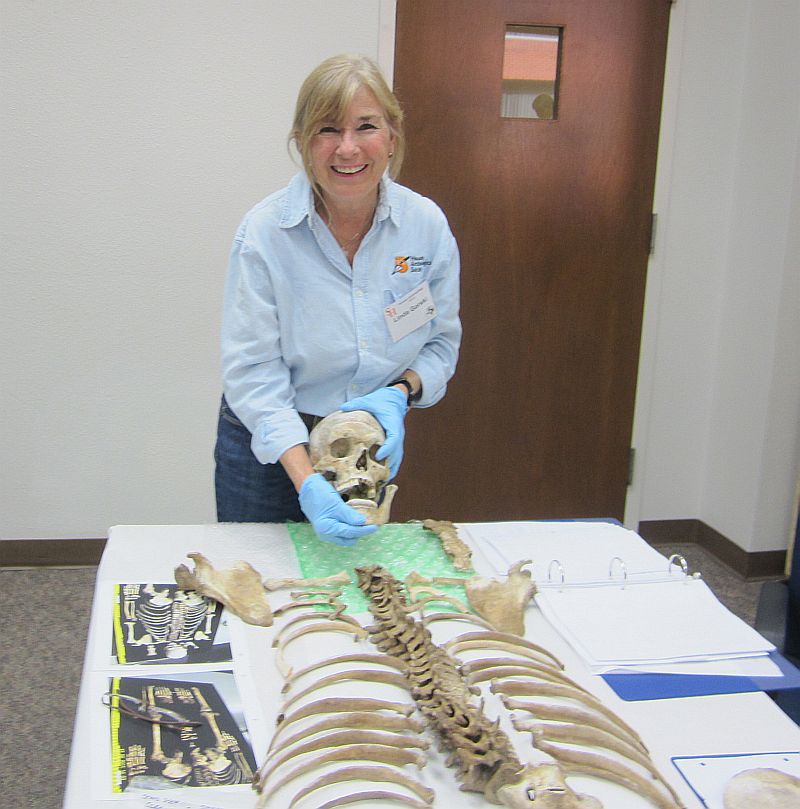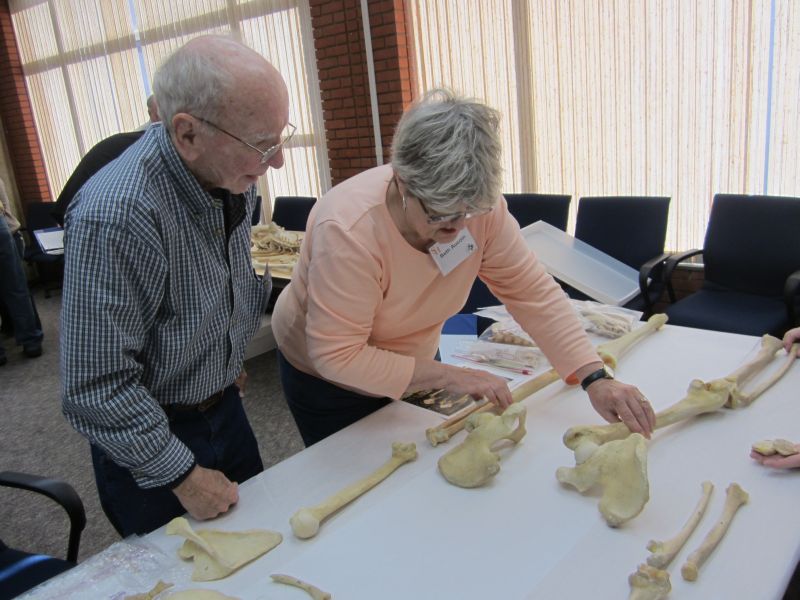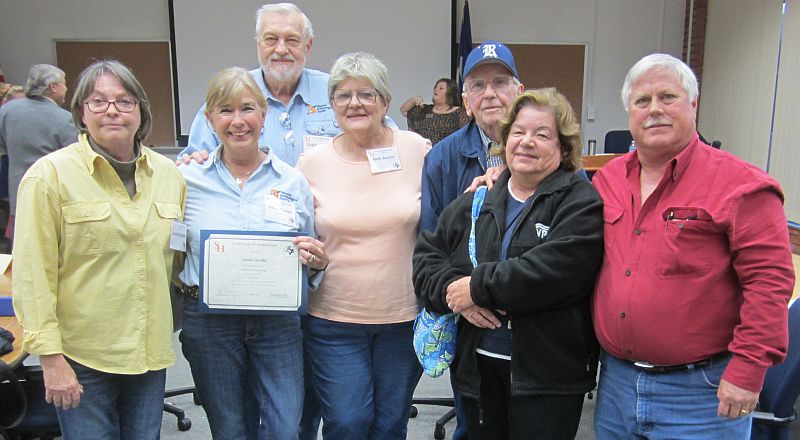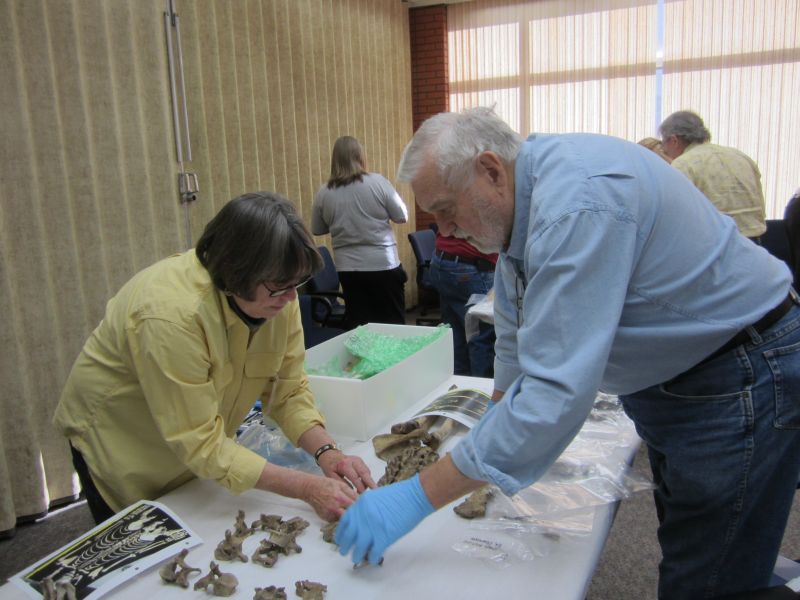HAS Members Attended Bone Workshop (January 18th, 2013)
Several members from HAS participated in a bone workshop hosted by The Southeast Texas Applied Forensic Science Facility (STAFS). Sandy Rogers, Beth and Pat Aucoin, Charlie Gordy, Marilyn and Walter Horton and Linda Gorski visited the facility on January 18th, 2013.
Here is the text of the article from the Huntsville Item, with photos from HAS.
The Southeast Texas Applied Forensic Science Facility recently trained archeological stewards from the Texas Historical Commission on how to recognize and identify key features of human skeletons they may encounter at archeological sites.
The Texas Historical Commission has 114 volunteer archeological stewards who assist with finding, recording and monitoring archeological sites and providing education programs and events around the state. Since stewards may encounter bone fragments at archeological sites or at programs offered to the public, they turned to STAFS for training on detecting human skeletal remains.
“Every little bit of knowledge helps when you are out in the field,” said Sandra Rogers, an Archeological Steward with the Texas Historical Commission and Collections Registrar with the Sam Houston Museum. “We want to know if this is human or animal bone, whether it is a contemporary or an ancient bone, and whether we can determine the sex and age.”

Linda Gorksi works on identification of various parts of a skeleton
As part of the training, stewards were provided lectures and hands-on lessons in identifying human and animal bones and about the information human bones can provide about age, sex and ancestry. We participate in a lot of excavation across the state of Texas, and it is important to know the difference between human and animal bones,” said Linda Gorski, president of the Houston Archeological Society. Participants were given an overview of the skeleton, including features that provide clues to who the individual was. For example, position of cheek bones and palate shapes may help determine ancestry; teeth and sutures on the skull can provide information on age; and leg bones can predict height. They also learned the elements to look for to determine if the skeleton is contemporary or historic. Key components of the bone also are important to differentiating animal and human bones.

Pat (left) and Beth Aucoin reconstruct a skeleton

The HAS Crew: (l to r): Sandy Rogers, Linda Gorski, Charlie Gordy, Beth Aucoin, Pat Aucoin,
Marilyn Horton and Walter Horton
At the end of the training, teams were provided four separate human skeletons to analyze to determine age, sex and ancestry. Most teams were able to come up with fairly accurate descriptions of the individuals.

Sandy Rogers and Charlie Gordy examine human vertibrae
Archaeologist Lila Rakoczy, a Visiting Professor at Sam Houston State university's History Department, recently started working in cemeteries and found bones sticking out of a grave. It peaked her interest in the training.
“I found it really interesting the aspect of being able to confidently identify or at east speculate with some knowledge as to whether the person was male or female, how to get a sense of height, and to get a general idea of the conditions of bone and what parts of bones look like,”
Click here to view the original article in the Hunstville Item

